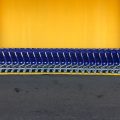Polluted waterways, seas, and oceans are a huge problem all over the world and have a significant impact on our environment. Some start-ups like Ocean Clean Up develop and deploy machines to clean the waters by collecting plastic and other debris. The Port of Antwerp is also taking responsibility when it comes to floating debris in the port area.
Drones Detecting Floating Debris in Port of Antwerp
Antwerp wants a clean harbour. Every year the authorities collect 50 tonnes of plastics, wood, cardboard, organic material and mooring lines. It is important to remove the debris as soon as possible to minimize the impact on biodiversity and reduce water pollution. However, the 120 km2 Port of Antwerp screening is a gigantic, labor-intensive, and time-consuming operation.
Faster Tracking and Clean-up Thanks to Drones
The Port of Antwerp started to deploy drones to get a birds-eye view of the harbour and detect the floating debris and other pollution faster and more efficiently. For that, the Port of Antwerp has developed a “machine vision” application. This piece of software builds a map that indicates the presence of floating debris using the images sent by the drones.
More Tasks for Drones
Detecting debris in the water is only the beginning of employing drones in the port. To get a ‘live feed’ from the port, they have deployed a network of autonomous drones that can survey the 120 km2 area. The almost real-time information will also be useful for the Harbour Safety & Security (HSS) unit and its security partners. 5G will play a major role in streaming the images from the drones to the software.
Author Bio
Dimitry Vleugel is the founder of Androidworld.nl. He writes about Technology, Android, and Google. He is a podcast producer and presenter and hosts Tech, Android, and Human Interests podcasts. He is also a LogisticsMatter editor and the producer of the Does Logistics Matter? Podcast.







